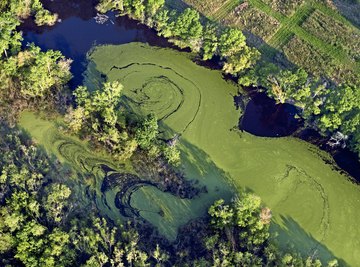
Protists are a diverse group of unicellular, multicellular and colonial organisms. Because all have a true nucleus, every one of these organisms is called a eukaryote. All as well require aquatic environments for survival, including damp soil, animal fur and simply water, both fresh and marine.
Protist Reproduction
Protists are from the protista kingdom, which is filled with many kinds of protists as well as both sexual and asexual reproduction. Protists have developed a multitude of sexual adaptations to suite their environments and characteristics. The type of reproduction used by protists is influenced by their life cycles. Most protists however use some combination of sexual and asexual reproduction, though some only use one exclusively.
Asexual Reproduction
Protists reproduce asexually by budding and binary fission. Binary fission is a form of multiple fission and is also considered the most typical form of reproduction in the protista kingdom. Budding occurs when asexual reproduction produces a bud -- a daughter nucleus -- which then develops into its own structure. This is the basic premise of multiple fission: daughter nuclei dividing until they actually transform into a young version of the parent protist. However, binary fission is an unsustainable form of asexual reproduction that eventually necessitates a form of sexual reproduction called conjugation. Conjugation is the exchange of genetic material between two protists in order to prevent death caused by performing binary fission more than a several hundred times.
Sexual Reproduction
Protists reproduce sexually though syngamy, which is conjugation and an alternation of generations. In syngamy, two gametes -- reproductive cells each with half the required genetic material -- combine to form a zygote, a fertilized egg. Syngamy occurs in slime molds, green algae and similar organisms.
The alternation of generations is essential to plants but used by protists as well for sexual reproduction. It requires two alternating generations, sporophytes and gametophytes, which work together to reproduce. Zoospores, created by the sporophytes, produce male and female gametophytes, which combine egg and sperm, producing a new sporophyte to re-initiate the cycle.
Protist Diversity
Understanding the diversity in the protista kingdom is important to understanding the reproduction of protists. Fungus-like, algal and protozoa are three categorizations of protists that reduce down into divisions, each containing many organisms.
Fungus-like protists only have one division, Myxomycota, which are slime molds. These reproduce sexually through syngamy. In fact, the reproductive part a slime mold creates makes it look like a fungus.
Protozoa include ciliophora, freshwater organisms that move using cilia, which are tiny hairlike structures. Being one of the most complex protists, ciliophora use conjugation. Rhizopoda reproduce most often using binary fission.
Spirogyra, an algal protist, reproduce through conjugation. The one exception to this is the euglena division of algal protists, which does not reproduce sexually, only asexually by dividing longitudinally.
